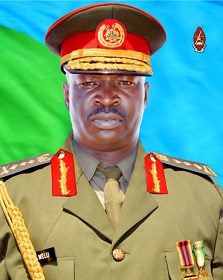
By Marvin Ocol
With the National Development Plan (NDP) III targets of agro industrialization given to the Ministry of Agriculture, Animal Industry and Fisheries (MAAIF), the need to support the Parish Development Model framework activities leaves MAAIf with a funding gap of Shs 280 billion.
This is according to MAAIF Minister Frank Tumwebaze.
While presenting the budget framework paper for the financial year 2022/23 to the Parliamentary Committee on Agriculture, Animal Industry and Fisheries, Tumwebaze revealed that research, breeding and appropriate technology development; development and issuance of policy and regulatory guidelines on enterprise selection, quality input sourcing, pest and disease control, farmer education and agricultural extension support at parish level, among others have been prioritised. Others are: diseases, pest and vector control, extension services through the districts and sub counties, mechanisation, support to precision agriculture interventions, soil management and conservation and disaster interventions.
Strategic interventions with new and high value perennial commodities such as cocoa, hass avocado, cashew nuts, coffee and macadamia among others for export promotion have been prioritised.
According to Tumwebaze, every activity will be prioritised and will be contributing to alleviation constraints for the farmer at each value chain component stage.
While funds under PDM directly disbursed to the districts through the Local Government Ministry will enable farmers at the parish level to access money directly and procure inputs of their choice under the MAAIF Zoning Strategy and Enterprise section guidelines, Tumwebaze says MAAIF has the responsibility for policy and regulatory support, extension, farmer education and implementing interventions at the other stages of the value chain.

Tumwebaze emphasised that these value chain activities if systematically funded and implemented without any policy deviation or reversal, the agro industrialization target will be met.
In the next four years, Tumwebaze said, MAAIF hopes to: increase the arable land under agricultural cultivation from the current 35% to at least 50%, increase the rate of annual growth of agriculture from 3.5% to the sub-Saharan average of 6.0%, increase the volume of agricultural exports in the current big international market (EU, USA, the Gulf, AFTA, CFTA) where Uganda enjoys free access without any quarters and tariffs and reduce the current number of farmers in subsistence agriculture by at least 50%.
“Hon chair and colleagues, I pray and request for your support in securing adequate resources for the above priorities,” Tumwebaze asked the Committee.
Without these activities (along the value chain) getting adequate financing in the next budget, Tumwebaze said the NDP III target of creating and sustaining an agricultural eco-system characterised by agro based industries will not be met.
The same will be true for the interventions under the PDM framework,” Tumwebaze noted, adding that: “The boosted production at parish level requires an equal and corresponding boost at the other stages of the value chain for sustainability and predictability of agriculture.”






